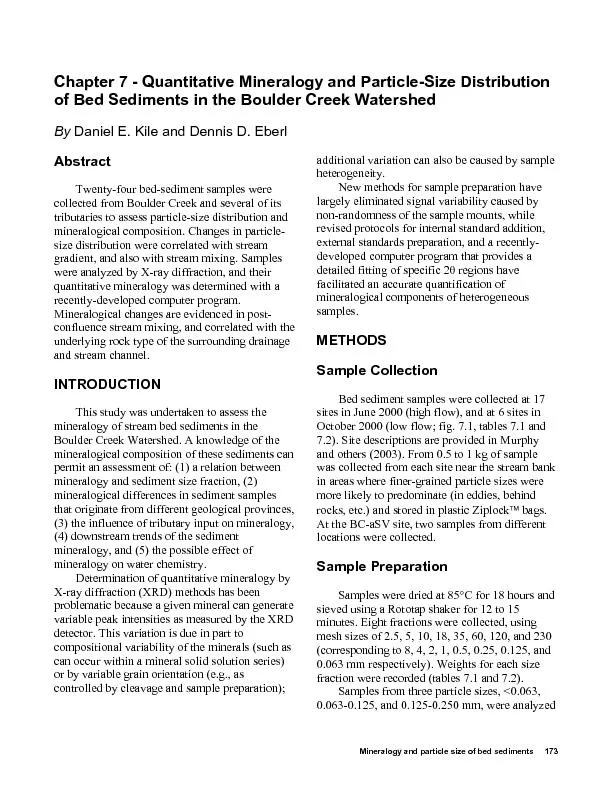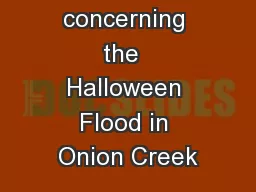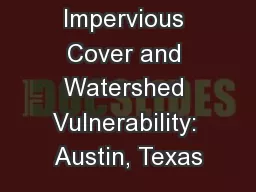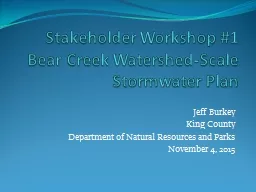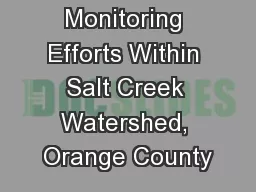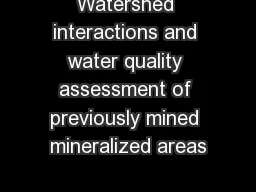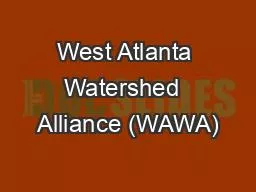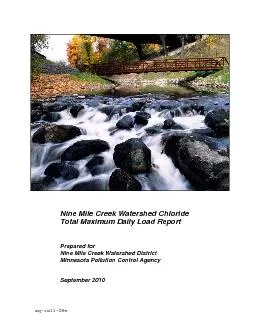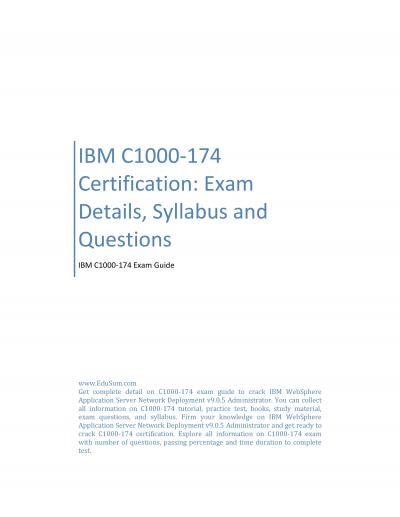PDF-174 Comprehensive water quality of the Boulder Creek Watershed, Co
Author : calandra-battersby | Published Date : 2016-06-26
176 Comprehensive water quality of the Boulder Creek Watershed Colorado during highflow and lowflow conditions 2000 greater than ont indicates that Xray diffraction
Presentation Embed Code
Download Presentation
Download Presentation The PPT/PDF document "174 Comprehensive water quality of t..." is the property of its rightful owner. Permission is granted to download and print the materials on this website for personal, non-commercial use only, and to display it on your personal computer provided you do not modify the materials and that you retain all copyright notices contained in the materials. By downloading content from our website, you accept the terms of this agreement.
174 Comprehensive water quality of the Boulder Creek Watershed, Co: Transcript
Download Rules Of Document
"174 Comprehensive water quality of the Boulder Creek Watershed, Co"The content belongs to its owner. You may download and print it for personal use, without modification, and keep all copyright notices. By downloading, you agree to these terms.
Related Documents

